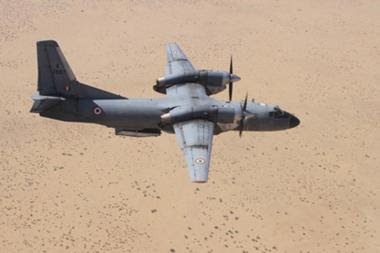
Inclement weather on Wednesday has affected search and rescue efforts to locate the Indian Air Force’s (IAF) An-32 transport aircraft that went missing with 13 on board over Arunachal Pradesh on Monday.
“Helicopters and C130J [aircraft] have been unable to take off due to rain and bad weather. Sukhoi Su-30 is carrying out reconnaissance since morning after flying missions in the night but unable to spot anything,” said Wing Commander Ratnakar Singh, Shillong-based IAF spokesperson.
The C130J is a four-engine turboprop military transport aircraft. The IAF has also engaged an An-32 turboprop and an Advanced Light Helicopter, besides two Mi-17 choppers.
Ground search by the Army and the Indo-Tibetan Border Police in Arunachal Pradesh along the flight path of the missing An-32 has also failed to yield any result so far. Arunachal Pradesh Chief Minister Pema Khandu and Chief Secretary Satya Gopal promised help in mobilising police, local administration and villagers in locating the missing aircraft.
The An-32 took off from Jorhat in Assam at 12.27 p.m. on Monday for the Mechuka Advanced Landing Ground (ALG) in Shi Yomi district of Arunachal Pradesh but lost contact 33 minutes later. The ALG is about 30 km from the nearest point on the India-China border.
On Tuesday, Air Officer Commanding-in-Chief of the Eastern Air Command Air Marshal R.D. Mathur visited Air Force Station Jorhat and met families of the missing personnel. They are being regularly updated on the progress of the search for the missing aircraft, the IAF said.
Tuesday also saw the Navy’s P-8I aircraft join the search operations. The aircraft, which took off from INS Rajali off Arakkonam in Tamil Nadu, has a powerful synthetic aperture radar considered ideal for search and rescue sweeps to locate the missing aircraft.
The P-8I has electro-optical and infra-red sensors to penetrate thickly forested areas. The aircraft has not reconnoitred the area since Tuesday afternoon, officials said.
The An-32s are equipped with an emergency locator transmitter (ELT), which remains active for a few days after a crash. It gets activated when the impact of a crash is 20 times that of gravity — or 20g — and works based on line of sight, which means search aircraft have to pass overhead to be able to pick up its signal. No signal had been detected so far, IAF officials said.
The missing An-32, from the route it had taken, is feared to have crashed either in West Siang or Shi Yomi district.